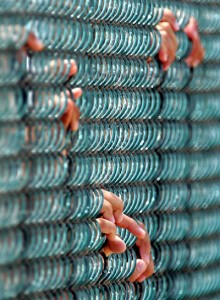 Guantánamo at 10: the defeat of liberty by fear
Guantánamo at 10: the defeat of liberty by fear
By Michael Ratner, Wednesday 11 January 2012 09.00 ES
…
On 11 January 2002, the United States began showing major signs of what I call “Guantánamo syndrome”, after one of the ailment’s first and most enduring symptoms. That was the day when the Bush administration transferred the first 20 detainees to Camp X-Ray at Guantánamo Bay, Cuba, after being assured by its Department of Justice that the location placed detainees outside of US legal jurisdiction.
But the first hint of our national illness appeared earlier, in the weeks following the attacks on the Pentagon and the World Trade Centers, when the Bush administration took the lid off unlimited executive power. This is the lid that nobles, who had endured centuries of rulers imprisoning anyone who ticked them off and holding them indefinitely without having to state or prove any kind of case, affixed in 1215 with the Magna Carta. It’s the lid that the original framers tightened to the specifications of the United States when they ratified the Constitution in 1790.
But after the attacks on the Pentagon and the World Trade Centers, Americans feared our still-unknown assailants far more than we feared the implications of unchecked executive power. We could not get the lid off that particular petri dish fast enough. Less than a week after 11 September 2001, Congress passed the Authorisation for Use of Military Force, which grants the president unlimited power to use force against anyone in the world – any nation, organisation, person, associated forces and so forth that the president determines was, in any way, involved in 9/11. Military Order #1, passed two months later, authorised the president to direct the capture of any non-citizen anywhere in the world allegedly involved in international terrorism, and detain that person indefinitely without access to the remedy of habeas corpus. (In another example of the deterioration of Americans’ rights post-9/11, that power can now be applied to citizens as well.)
Together, these acts, plus the Bush administration’s declaration of a so-called “war on terror”, doubled as publicity stunt and power grab. By treating the assaults of 9/11 as acts of war rather than crimes, despite the fact that laws of war apply to battles between countries, the White House could “go cowboy”. And so it did, eschewing the Constitution, kicking down doors, taking prisoners at will, and doing whatever it liked with them – without any heed for international law and without caring whether those prisoners were the right ones or not.
Most of post-9/11 America was a fairly easy sell for these shenanigans. People were still gasping from the impact of the assaults on New York and DC – nerves still shot from the anthrax scare that followed and the nightly footage of crews digging through the rubble of the Twin Towers. The Bush administration played on the public’s fears of further attacks, its desire for retribution and its thirst for someone else to “Find and Punish the Bad Men”. Then Secretary of Defense Donald Rumsfeld advertised the camp at Guantánamo Bay as a holding pen for “the worst of the worst”. Attorney General John Ashcroft solemnly intoned, “Terrorists have no constitutional rights.”
Combined, these actions let loose a contagion of fear and lawlessness that bred Guantánamo and its many attendant ills.
Ten years later, the effects of Guantánamo syndrome are still with us, possibly forever. What began as emergency measures under the 43rd president of the US have now hardened into law under the 44th. The actions that seemed so plainly toxic to me and my colleagues at the Center for Constitutional Rights in 2001 have become a long-term, manageable chronic illness for most Americans: indefinite detention and military commissions, hidden prisoners, abuse and possibly torture (now outsourced to America’s friends abroad), extraordinary renditions, domestic surveillance and a war without end.
Guantánamo numbers 171 men today – many of them held since the camp’s opening nearly 10 years ago, and some cleared but still wasting away out of sight and out of mind. That number also includes 46 who have been approved for “indefinite detention”, who will probably live and die there. In some cases, this is because the primary “evidence” against them has been elicited under torture, and even the most conservative judges have ruled that this renders their “confessions” invalid. In other cases, the administration is allowing detainees it considers “dangerous” to languish without trial so long as neither the Congress nor courts insist otherwise. First, the Bush administration claimed, and now the Obama administration still claims, that either they were in groups associated in some way with 9/11 or terrorism, or they are dangerous.
The story of Guantánamo’s 10th anniversary and the deterioration of civil and human rights in post-9/11 America is a story about what fear will do – the breakdown of a body politic that occurs when a country attacks its own constitution in the name of defending it.
…
http://www.guardian.co.uk/commentisfree/cifamerica/2012/jan/11/guantanamo-at-10-defeat-of-liberty?intcmp=239 or http://bit.ly/A0R0vk
Mark Wilson/Reuters photograph of detainees holding on to a fence at camp 4 of Camp Delta, 2004. http://www.guardian.co.uk/world/gallery/2012/jan/11/guantanamo-bay-usa#/?picture=384280907&index=1 or http://bit.ly/wFPjSI
